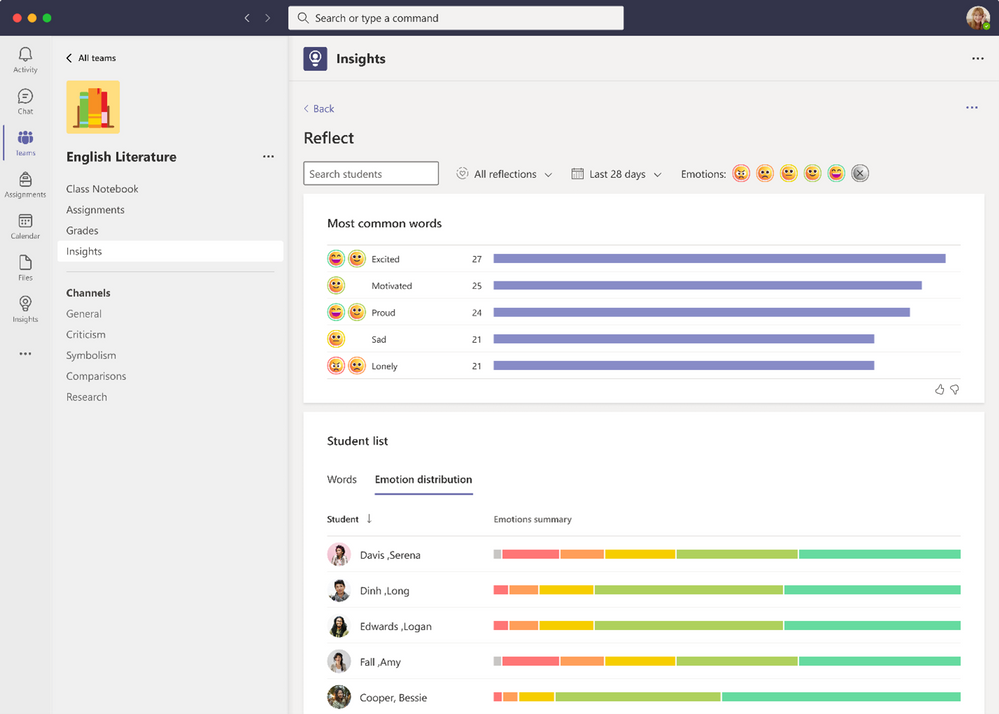During any class, sometimes it’s hard for each student’s voice to be heard. We’re making it simpler with two new features in Reflect in Microsoft Teams: the Feelings Monster and check-ins, which both empower and enable students to share their emotions, express their needs, and be themselves in the classroom.
Reflect in Teams launched earlier this year to provide students with opportunities to share their emotions and give educators a tool for building more supportive classrooms.
Introducing the Feelings Monster
To make the Reflect experience more engaging for students, we are excited to welcome the Feelings Monster to Reflect! Designed to support students in recognizing and naming their emotions, the Feelings Monster illustrates over 50 emotions alongside their definitions, helping students build their emotional vocabulary they need to express themselves clearly.
Use Reflect to take a quick pulse of your class’s mood and relationships, start a conversation about empathy, and more. The Feelings Monster helps make conversations about emotions more approachable while helping students develop self-awareness and relationship skills that have a lifelong positive impact.
View Reflect Check-In Data in Education Insights
By regularly posting Reflect check-ins and providing opportunities where all students feel safe sharing their emotions, educators can understand each student’s baseline and notice when there is a shift that requires a teacher’s attention. Student reflections are presented visually in detailed dashboards that can help educators quickly learn which words students are using the most to describe their feelings, which days were challenging or especially engaging for students, and which students may be struggling.
Educators can use this data to build relationships and a supportive classroom community—all while encouraging a regular practice of self-reflection. The Education Insights class overview dashboard shows students’ Reflect data alongside engagement, assignment performance, and reading fluency data from Reading Progress. This holistic overview can help educators interpret each student’s strengths and needs so educators can make more informed decisions about improving student outcomes.

Learn more about how to start enabling student voice in your classroom and if you haven’t tried Teams yet, click here to sign up and started for free.










